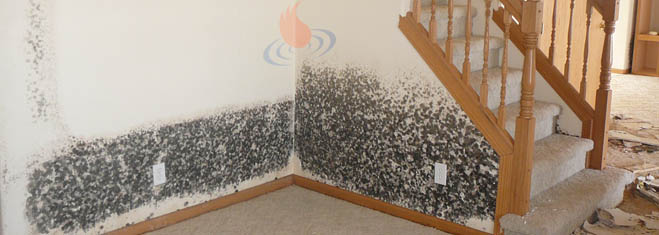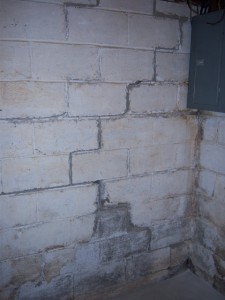- September 22, 2019
Mold in Basement

If your home has a basement or partially underground living space, it can help to learn the ins and outs of mold problems in these areas. While a basement can be amentiy to have in a house, they are also more susceptible to these types of problems. The biggest reason for this is mold needs water/moisture in order to grow. If you live in an area of the country that has basements you are probably very aware that basement can often get water damage more so than other areas of a house. Hopefully this article will help you keep your home free of mold or if you are already having issues provide you with information on how to deal with the problems at hand.

What Causes Mold Growth in Basements and How to Prevent It?
- Flooding
- Foundation Cracks
- Sump Pump Failure
- High Humidity/Stagnant Air
The three things that are needed for mold to grow are water/moisture, high humidity, and organic nutrients. All of the above listed are ways that water can enter a basement. Most are pretty self explanatory. Whenever you notice an area of your basement is letting water in, it should be addressed immediately. If you notice moisture in an area from little or no rain, imagine how bad it could get with a heavy downfall. Sump pumps are used in basements to pump water down a slope away from a house. It is great to have dual sump pumps and/or a battery powered backup to make sure you are always getting rid of excess water and avoid flooding in a basement.
Some people, especially those with unfinished basements look at a basement as a non living environment. They close off vents in an effort to save money on air conditioning/heat, etc. However, this can lead to a more costly mold problem in the future down the road. Taking steps like that mentioned above can lead to humidity and moisture problems and ultimately mold growth. Since most basements share the same air ventilation systems as the rest of the house, a mold problem in the basement can lead to elevated conditions in the rest of the home as well.
How to Find Out if You Have Mold in a Basement
If you are concerned that your basement has mold but are unsure of its presence or the extent of a problem, a certified mold inspector will be able to determine once and for all exactly what is going on. Performing air/surface samples will determine what species of mold is present and how much of it. Knowing this is essential in determining whether or not a real problem is present. If you are buying a home that you suspect a mold problem, testing will be able to see the same thing whether or not the problem is being covered up temporarily or not via paint or cleaning.
How to Remove Mold From a Basement

If you do end up in the unfortunate situation of having to deal with a mold removal in a basement here are some general steps that should be taken in order to remove the problem.
-
Stop the Source of Water/Moisture
-
Setup Containment Area for Work
-
Use Negative Pressure Throughout
-
Remove and Discard Contaminated Materials (Drywall/Carpet/Insulation)
-
Clean/Treat Studs with Anti-Microbial Solutions
-
Run Air Scrubbers Throughout
As you can see, the above steps are not something that most people have the capacity to handle on their own. It is important to realize that it is extremely hard if not impossible to remove mold from a porous surface like drywall or carpet. So cleaning the surface of these materials is not really treating the problem properly and it will most likely come back.
Final Thoughts
At the very least, you must stop the source of water or moisture within a basement to stop these problems from happening. Treat your basement with the same care that you would any other room in your house. Use de-humidifers if necessary and run the air conditioning to control the environment and prevent indoor mold growth in your basement. If you have any questions about this subject or would like to schedule an appointment with a certified mold inspector from MI&T to evaluate the situation, please give us a call at 855-600-6653.

